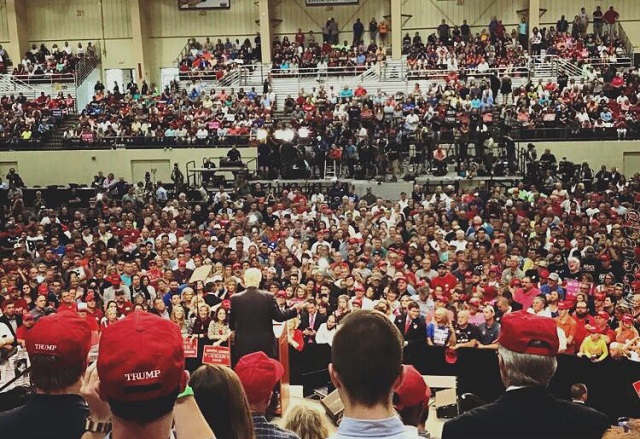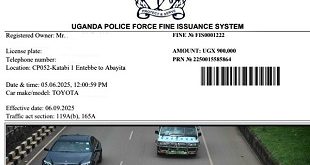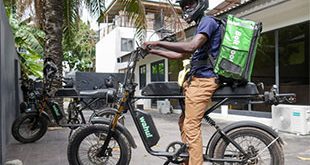
Washington, United States | AFP |
Does Donald Trump have enough “hidden” support among Americans reluctant to publicly express they will vote for him to win the presidency on Tuesday?
These undeclared backers might just be Trump’s secret weapon — potentially making the difference in an extremely close race against the Democrat Hillary Clinton.
Outside the White House, Thomas Hudson, a 64-year-old military veteran, reluctantly admits having cast an early vote for Trump. But he said he has a “guilty conscience” about it, whereas he usually feels “very proud” to vote for a Republican.
Like Hudson, 27 million other Americans have cast votes early, as allowed in many states.
Experts have been struggling to assess the true weight of these “invisible” voters, whose numbers are hard to measure precisely because they are shy about divulging their support for the controversial Manhattan billionaire.
The crucial question is whether they could generate an enormous electoral surprise akin to the shock Brexit vote for Britain to leave the European Union.
Political scientists describe this kind of surprise as the “Bradley Effect”; in 1982, Tom Bradley, a black candidate for the California governorship, lost the election although opinion polls had made him a clear favorite.
Many voters, it appeared, were reluctant to admit that they planned to vote for his white rival — fearful of being accused of racism.
Among the potential “hidden” voters today are the 47 million white Americans without college degrees who stayed home on Election Day in 2012 but who have been assiduously courted by Trump, as David Wasserman notes on the FiveThirtyEight website, which offers election analysis.
By winning the confidence of a sizable share of this electorate, Trump could carry the election, said Wasserman, an editor with the Cook Political Report.
Three scenarios
That thought sends shivers up the spines of political prognosticators — starting with FiveThirtyEight’s respected founder Nate Silver — who were burned by Trump’s victory in the Republican primaries. Few had thought the garrulous but politically amateurish real estate mogul was capable of that.
Still, less-educated whites will have to register and then actually vote in serious numbers on Tuesday, and Wasserman is not sure this will happen.
The Brookings Institution think tank has suggested three scenarios involving “hidden voters.”
But even in the best case for Trump, with less-educated whites voting in the same proportion as college graduates, Trump might win one or two additional states (Wisconsin and Iowa) and potentially a majority of the popular vote — but not the all-important electoral college vote.
In US presidential elections, the popular vote in each state determines the selection of a set of members of the electoral college, who pledge to support a given candidate.
Yet Republicans are convinced that their “hidden” voters will tip the balance.
A survey by the Politico website among Republican operatives in 11 key states found that 71 percent of them believe that pollsters are underestimating the number of “hidden” voters.
“I personally know many Republicans that won’t admit that they are voting for Trump,” said one Virginia Republican. “I don’t like admitting it myself.”
The many undecideds
Telephone surveys may also undercount Trump supporters, who appear more likely to reveal their true preference in internet polls.
“Hillary Clinton’s lead over Donald Trump is wider in live-telephone surveys than it is in nonlive surveys,” said FiveThirtyEight.
Such technical factors contributed to pollsters’ failure to predict the Brexit vote, according to William Hausdorff, a scientist and political observer writing in Newsweek.
A lower than expected youth turnout and the failure of undecided voters to split as predicted also played a role, he wrote.
“I am still undecided… I am not a fan of either Trump or Clinton,” said Jacqueline Arrowsmith, a woman in her 40s who was interviewed outside the White House.
“I wanted to vote for the Republican but I can’t vote for Trump,” she said “So I am really stuck.”
Some 15 percent of Americans are still unsure how they will vote on Tuesday. At this point in the 2012 campaign, only five percent of voters were still hesitating between Barack Obama and Mitt Romney, as FiveThirtyEight’s Silver notes.
“In theory, with Clinton at ‘only’ 46 percent of the vote, he could beat her by winning almost all of the undecided and third-party voters,” Silver wrote on Monday, adding that “in practice, there’s no particular indication that these voters have Trump as their second choice.”
Voter turnout is another unknown.
Early-voting data in states that permit it shows more Democrats than Republicans taking part.
But turnout among the young and African-Americans, essential pillars of Obama’s 2008 victory, has not been particularly high.
 The Independent Uganda: You get the Truth we Pay the Price
The Independent Uganda: You get the Truth we Pay the Price



